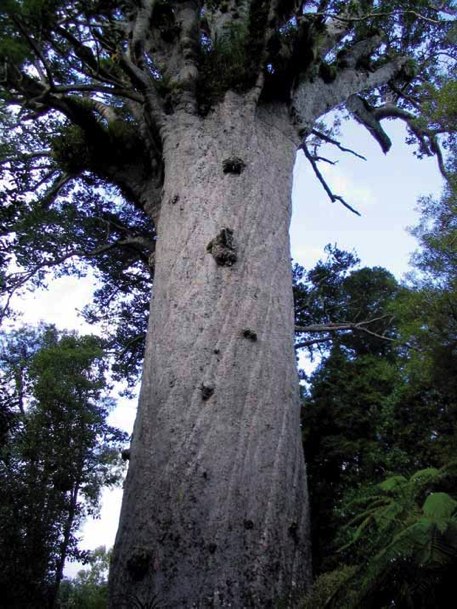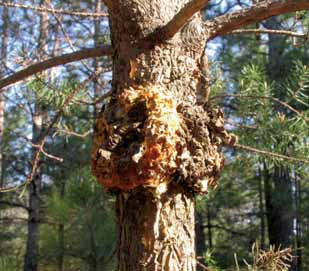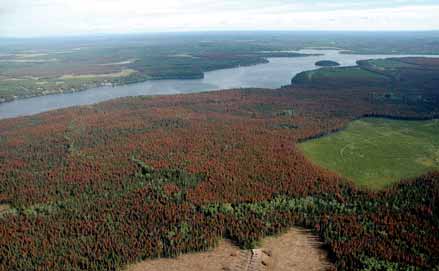PESTS AND DISEASES OF FORESTRY IN NEW ZEALAND
Global forest biosecurity threats and the risk to New Zealand
From Biosecurity, issue 99, August 2010.
Protecting all forest types is of paramount importance, writes New Zealand Forest Owners’ Association Forest Health Administrator Bill Dyck.
The economic value of New Zealand’s exotic forest plantations is in the order of many billions of dollars, and the same holds for the replacement cost of the “urban” forest. The value of our indigenous forest, on the other hand, is immeasurable – partly because of the high value to tourism but especially because of the strong cultural ties that most New Zealanders have to the natural landscape, including iconic trees such as Tane Mahuta, the giant kauri in Waipoua Forest, Northland.

Protecting all of these forest types from biosecurity threats is of paramount importance to New Zealand, and is why the Government and industry invest so much in keeping unwanted organisms out, maintaining a vigilance to detect those that do sneak in and eradicating the really nasty ones when possible.
New Zealand Forest Owners’ Association Chief Executive David Rhodes believes “we can be justifiably proud of our forest surveillance system, which has been in operation for more than 50 years” and is a model for other industries to follow. “Why should any industry just rely on MAF [the Ministry of Agriculture and Forestry] to ensure that pests and diseases aren’t spreading through the growing estate?” Mr Rhodes says. “That’s just playing Russian roulette, especially when all sectors have an army of eyes and ears in the field that they can harness!”
However, insect pests and pathogens do manage to get a foothold in New Zealand and have caused serious economic losses, especially to the exotic forest industry but also to our urban forests.
Dutch elm disease, for example, has caused millions of dollars worth of damage to elm trees in Auckland, and threatens to spread further south. It is being held in check by the efforts of passionate individuals who realise that without control not only will thousands of elms die, but the cost to the country in tree removal will be enormous.
Anecdotal evidence suggests that the fungus Dothistroma septosporum made its way to New Zealand on a pair of boots worn by a visiting forester, although it may be more likely that fungal spores blew across from Australia. This pathogen alone continues to cost the forestry industry tens of millions of dollars in lost productivity annually, and has greatly limited options for planting other pine species.
To date, our indigenous forests appear to have been relatively well protected against insect and pathogen invaders, although certainly not against possums and other mammalian pests.
Our forest biosecurity system is often hailed as one of the best in the world, but no biosecurity system is 100 percent foolproof. Incursions have happened and will continue to happen.

In the past decade, MAF Biosecurity New Zealand (MAFBNZ) has been called on to eradicate a number of serious pests, including white spotted tussock moth, painted apple moth, Asian gypsy moth, fall web-worm and several termite species.
While eradication has cost the country many millions of dollars, the decision to respond in all these cases recognised that failure to eradicate would undoubtedly have cost much more, not only in economic terms but at a great cost to public well-being. Just picture Auckland city trees covered in crawling painted apple moth caterpillars, being defoliated every year, and asthma sufferers being affected by the fine hairs that the caterpillars shed.
There are many serious threats sitting offshore that could potentially cause significant damage. For example, anyone who watched the Winter Olympics in Vancouver would have seen the magnificent sports facilities constructed for the event from beetle-killed pine trees. What wasn’t evident to viewers was the death and destruction left by the tiny mountain pine beetle that produced the raw material for these buildings. More than one billion trees have been killed over just a few years, and once thriving forestry towns are questioning their future because there will be no forest to harvest for another 100 years.

Even more threatening are the things we can’t see. Near the top of the list is:
- Fusarium circinatum, the fungus that causes pine pitch canker, a disease that threatened to make radiata pine extinct in its homeland in California, and that has caused Spain to replace radiata pine with eucalypts in some regions.
- Phytophthora pinifolia, a previously undiscovered organism that causes needle blight disease in Pinus radiata, and has recently threatened Chile’s forestry industry.
These examples are just some of the pests and diseases definitely not wanted in New Zealand.
Bill Dyck, New Zealand Forest Owners’ Association Forest Health Administrator, BillDyck@xtra.co.nz
Who protects our trees?
New Zealand has several types of forests, often classified as indigenous, exotic and urban (including every backyard tree). MAFBNZ’s responsibilities include protecting indigenous forests from biosecurity threats on behalf of the Department of Conservation and the New Zealand public.
Regional and city councils look after urban trees on behalf of ratepayers.
The New Zealand Forest Owners’ Association and New Zealand Farm Forestry Association, with MAFBNZ’s assistance, look after the biosecurity of most exotic plantations.



